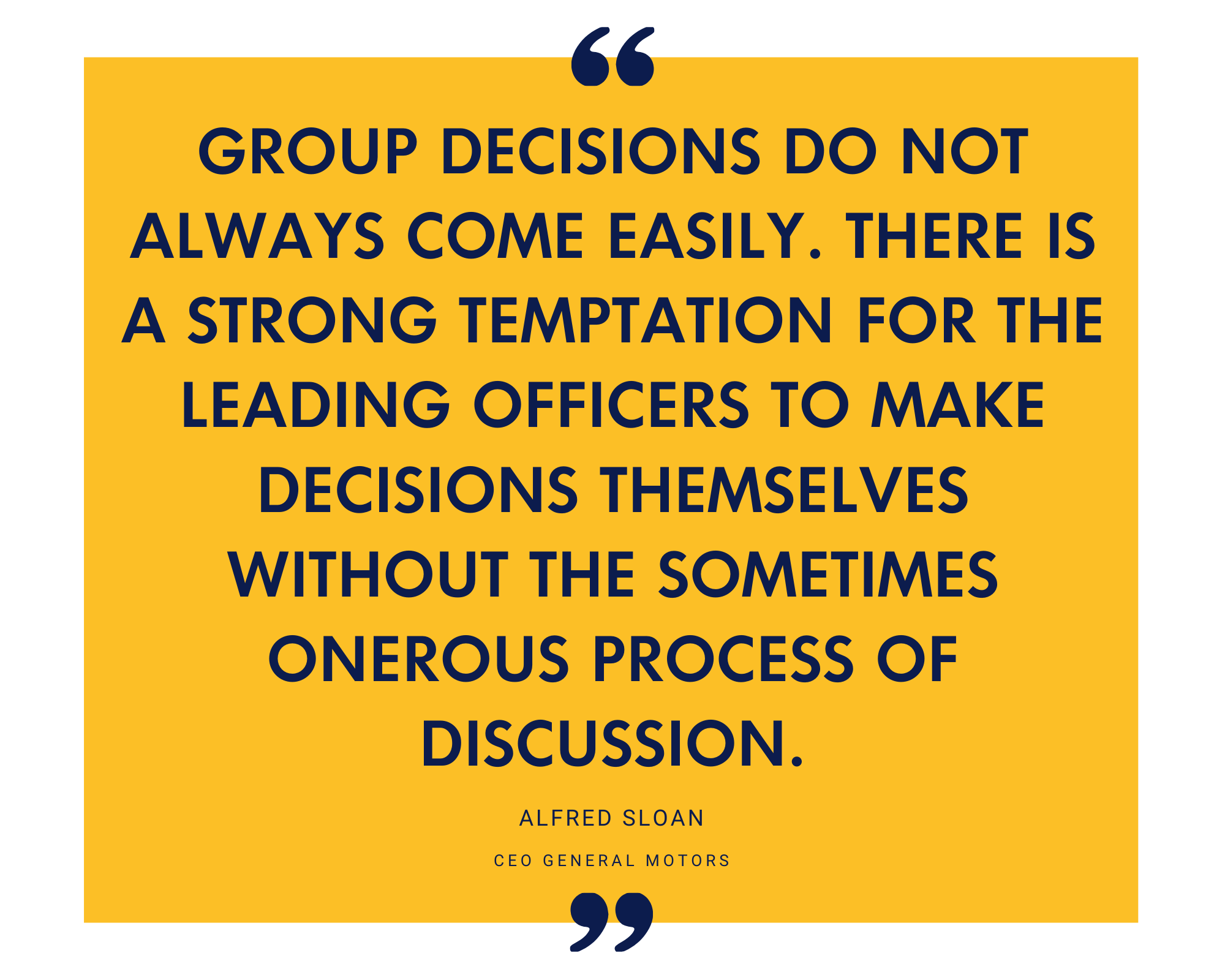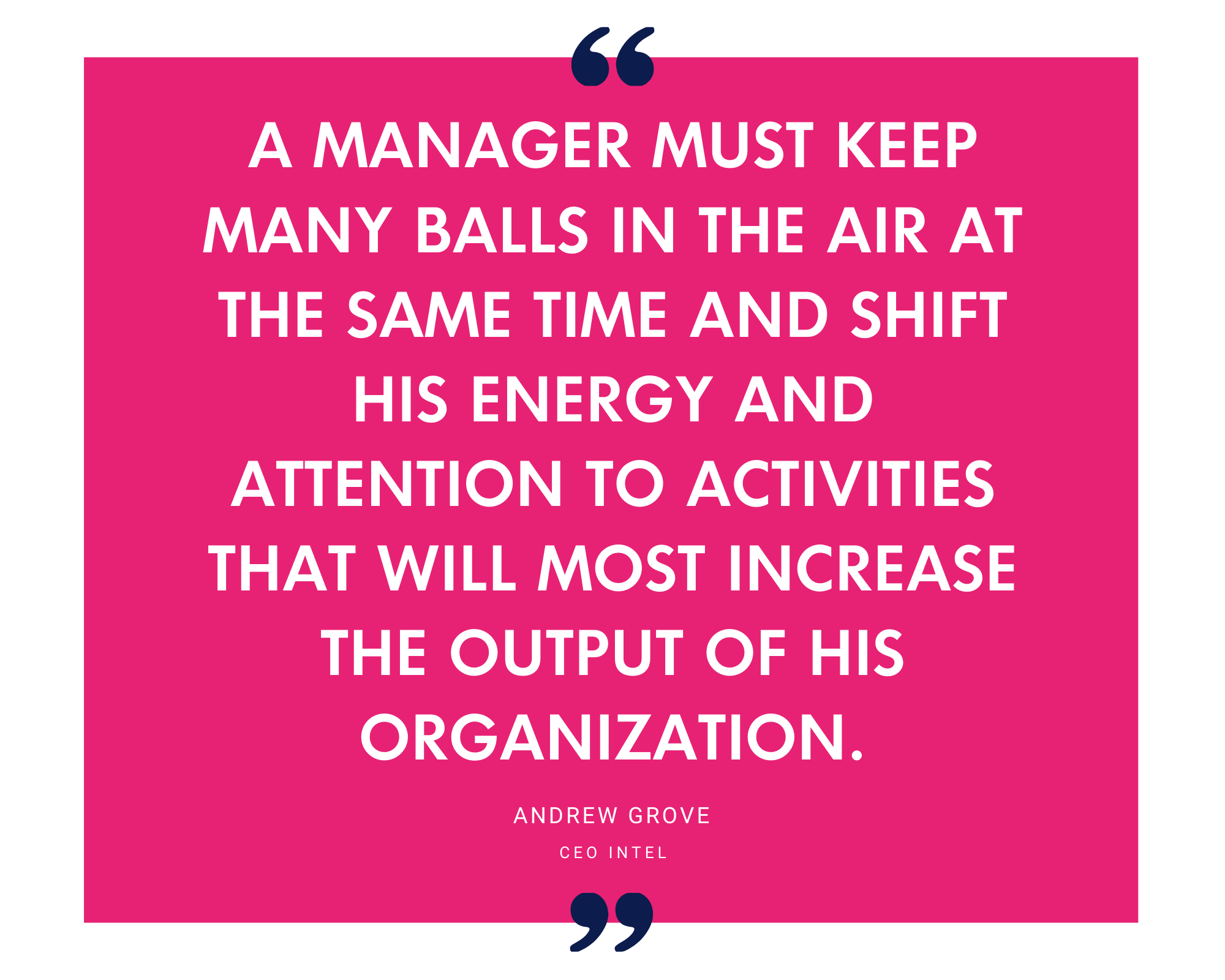Whether you’re a brand new manager or a long-time leader, companies and their management teams worldwide have recently been put to the test, as the coronavirus global pandemic has forced businesses to completely rethink how their employees work. When things get complicated, sometimes going back to the basics is the best place to start.
If you’re looking to improve your workflows and hit those ambitious goals, or how to get the most out of your meetings and performance reviews, here’s a handy guide on how to be the best line manager.
Gather information with a “Today Screen” performance management tool
In his landmark book High Output Management, former CEO of Intel Andrew Grove explained the importance of information gathering:
“It’s obvious that your decision-making depends finally on how well you comprehend the facts and issues facing your business. This is why information-gathering is so important in a manager’s life. Other activities – conveying information, making decisions, and being a role model for your subordinates – are all governed by the base of information that you, the manager, have about the tasks, the issues, the needs, and the problems facing your organization. In short, information-gathering is the basis of all other managerial work.”
With this in mind, establishing a central hub where managers can view at a glance a broad snapshot of the day’s workload, linking short-term objectives to individuals and teams while flagging high priority issues, should be a core component of your performance management software system. Making the most of a Today Screen hub ensures management can focus on what matters most while communicating both up and down the company’s hierarchy, instructing their teams and employees while conveying crucial information to upper management.
Manage workflows and objectives
Efficient line management requires a clear understanding of workflows and objectives, brought together under a performance management system that highlights these objectives and key results with easy to understand clarity. Both short and long-term goals should be tracked and measured on this system so that managers can monitor delegated tasks and take corrective action when necessary.
Pairing SMART (an acronym for Specific, Measurable, Attainable, Realistic and Timeline) goals with stretch goals is a good way for managers to supercharge the workforce to hit ambitious targets and encourage innovative thinking among teams. Managers can streamline workflow even more by considering batching similar tasks, applying the same set-up principles across a group of similar activities, using their performance management tools to identify the relevant processes.
Conduct frequent meetings
A study for Harvard Business Review from 2017 underscored the potential negative impact of meetings, revealing: “We surveyed 182 senior managers in a range of industries: 65% said meetings keep them from completing their own work. 71% said meetings are unproductive and inefficient. 64% said meetings come at the expense of deep thinking. 62% said meetings miss opportunities to bring the team closer together.”
When scheduling and conducting meetings, the best line managers understand that time is the most valuable commodity, both for themselves and their employees. Employees often feel overwhelmed and frustrated by long and seemingly aimless meetings, so establishing a clear agenda in which everyone is focused is crucial. Thorough preparation and coordination minimize the impact of time-wasters while giving managers the ability to collect and interpret pertinent data.

Key questions to consider asking

While the specific details of a given meeting will vary, there are a few fundamental questions effective managers bear in mind in order to keep the top priorities in focus. These questions will help keep the decision-making process on the right track at all times.
Before conducting staff or one2one meetings, managers should consider in advance the following six questions:
- What decision(s) need to be made?
- When does it have to be made?
- Who will decide?
- Who needs to be consulted prior to any decision being made?
- Who is responsible for ratifying or vetoing the decision?
- Who needs to be informed of the decision?
With these questions in mind, let’s take a look at the two main approaches to conducting individual and group meetings for effective management:
Staff meetings
These group meetings are all about sharing knowledge and information relating to specific goals, so should be outlined by managers in advance to ensure maximum use of everyone’s time. Process-oriented meetings should be held regularly with a clear idea of the substantive matters to be discussed and what outcomes are expected.
Staff meetings provide a great opportunity for managers to observe the exchanges and confrontations between employees, giving them a much clearer idea of the challenges their teams face by allowing opposing views to be discussed as well as highlighting any interpersonal issues which might be affecting performance.
It is the manager’s role to facilitate the meeting so that it doesn’t get derailed by off-topic conversations, and prevent it from turning into a free-for-all brainstorming session. Whenever possible, they should make sure the discussion remains on track, expediting healthy debate and allowing the attending employees to voice their positions without interruption.
One2Ones
Frequent and informal meetings between managers and employees are essential for companies that seek to increase productivity, resolve issues promptly and strengthen relationships with their teams. Continuous conversations provide opportunities for the sharing of information and the chance to resolve specific problems.
Such conversations allow managers to teach employees new skills and suggest ways to approach things, while the employee is able to inform management about any obstacles impeding his or her performance and raise any other concerns they may have. Indeed, one of the key points of focus for one-2-one check-ins should be on the employee, with managers allowing them to set the tone and agenda whenever possible as well as put together the information relevant to the discussion.
With a view to maximizing both the manager’s and employees’ time, Peter Drucker explained the role of the manager in one2one meetings succinctly in his book Management Essentials “The good time users among managers do not talk to their subordinates about their problems but they know how to make the subordinate talk about theirs.”
Practice achievement-driven motivation
The American psychologist Abraham Maslow articulated a hierarchy of needs when discussing what motivates people towards their best performance, and an effective manager should understand these needs when seeking to motivate their employees. From basic physiological and security needs, through social needs and recognition, Maslow identified the top of this hierarchy as self-actualization.
The best line managers understand that fulfilling this primary need requires achievement-driven motivation leading to self-actualization. This level of motivation drives a person to continually seek to excel in their performance, much in the same way a virtuoso pianist will practice daily to master their skills. Creating an environment in which employees can stretch their capabilities as far as possible is the mark of an effective manager functioning as a multiplier; i.e. A leader who injects energy into their employees, encouraging ideas to flow and problems to be solved.
Not everyone is cut out to be achievement-driven, but managers who maximize the information collated in their performance management platform can better understand which members of staff have the initiative and drive to put their performance into overdrive, providing them with the opportunities and challenges necessary for encouraging peak performance.
Star vs Poor Performers
One of the problems faced by managers is where to channel their attention when dealing with a wide variety of performance issues across the workforce. Many managers find themselves dedicating countless hours offering corrective feedback to under-performing employees, conducting reviews and gathering peer feedback in order to narrow down the problems and hope to offer solutions.
Dedicating a great deal of time and energy to poor performers may seem logical on the surface – and poor performers certainly shouldn’t be ignored, particularly if their actions are having a negative impact on their teams or the company at large – but managers who prioritise these workers at the expense of their star performers can end up exacerbating problems within the company. By concentrating on the star performers, managers are effectively leveraging their time towards pushing the high output, achievement-driven employees to excel, which in turn increases the output of teams and the company.
Managers can make the most of their employee performance management software to identify both under-performing and star performers based on how they approach and complete their objectives. By bringing everything together in a Today Screen feature, managers will have a holistic overview empowering them to make the best decisions for their teams and their company.






